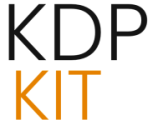
The Digital Workflow: From KDP Library to Global Shelf
The journey into multilingual publishing is now shockingly short, which is precisely why authors need to pay close attention to every step. The old way involved finding a translator, negotiating a per-word rate—often costing thousands of dollars for a full novel—waiting months, then manually uploading and formatting new files into the KDP dashboard. That process is obsolete for those joining the beta.
The Project Initiation Screen: Product Launch, Not Language Task
The process kicks off inside your familiar KDP portal management. You select a source title, hit the new “Translate” option, and you land on a dedicated initiation screen. Notice immediately that this screen feels like setting up a new paperback trim size or a new royalty tier—it’s a business configuration screen, not a linguistic tool. The very first decision point confirms Amazon’s view: this is a product launch decision.
What are the initial parameters?
- Destination Language Selection: You are immediately presented with the currently supported pairings. As of today, November 7, 2025, this is a tight focus: English to Spanish, Spanish to English, and German to English. Amazon has signaled future expansion, but you can only work with what’s live now.
- Source File Confirmation: You confirm the manuscript Amazon will use as the source. No external file uploads—it’s tied directly to the established KDP asset.
- Commercial Configuration: You proceed to the configuration stage, mirroring how you would set up any new edition. This methodical approach keeps the commercial oversight firmly in your hands.
This design philosophy is brilliant for platform lock-in. By integrating translation so deeply into the existing setup sequence, Amazon ensures authors rarely need to leave the ecosystem for the *start* of the process. They’ve made the hardest part—the upfront cost and file exchange—disappear.
Price Point Determination and International Sales Strategy
The next critical piece of the puzzle you control is the localized list price. This is where your international marketing strategy takes center stage, and the platform doesn’t decide for you.
While the system *likely* offers tooling—perhaps suggesting a conversion rate pegged to the original, or even providing aggregated data on local purchasing power indices or competitor pricing for similar genres—the final decision rests with you. You must explicitly define that new list price for the foreign edition. Think about the implications:
- Market Penetration: Aiming for quick adoption in a new territory? Set an introductory price significantly lower than the converted USD price.
- Premium Positioning: If your genre commands high perceived value in a specific market (say, literary fiction in Germany), you can price it at a premium relative to the English original, confident in your brand recognition.
- Royalty Tier Alignment: The price you set directly impacts your potential royalty percentage (35% or 70%), which makes this setting crucial.
Resist the urge to just click the system’s suggested conversion. Take a moment. Look at what similar *human-translated* books are charging on the German or Spanish Kindle store today. Your control here is your leverage in the new global arena.. Find out more about Kindle Translate for independent authors.
The Manual Override Versus Seamless Automatic Publication Choice
This is, arguably, the single most important gate in the entire process—the final publishing trigger. It forces you to quantify your risk tolerance regarding AI-generated text for a creative product.
You face two distinct paths:
- The Automatic Path (Speed Over Polish): Select this if you are either extremely confident in the AI’s output for that specific language pairing or, more likely, if you are aggressively expanding your backlist and prioritizing *speed* above all else. Upon successful internal quality evaluation (more on that proprietary check later), the book publishes automatically, often within a few days.
- The Mandatory Manual Review Stage (Quality Over Speed): This is the safety valve. Choosing this path grants you access to the translated manuscript files. These are likely presented in a simplified review document format, optimized for spotting errors rather than complex layout critiques. This allows you to:
- Perform a high-level, quick check yourself if you have target-language fluency.
- Crucially: Contract a specialized third-party editor for targeted polishing *before* the final go-ahead.
For your flagship titles, that new release you’re banking on, or any book with complex world-building or dialogue-heavy prose, the manual review option is non-negotiable. You are the final gatekeeper for your literary brand’s linguistic nuance.
Market Ramifications: Redrawing the Economic Map for Indie Creators
The introduction of a free, fast translation service fundamentally redraws the economic map for millions of self-published writers globally. Translation has officially moved from a high-cost, capital expenditure into an operational feature—a setting you toggle. This has immediate and profound effects on career planning and content longevity.
Quantifiable Impact on Author Reach and International Discovery
Consider the data: less than 5% of titles on Amazon.com currently exist in more than one language. This represents an enormous, untapped market, primarily non-English speaking, which is consistently cited as the fastest-growing segment in the global e-book market.
Let’s do some quick arithmetic that authors are already running right now. If your book currently sells 10,000 copies in English over a year, gaining traction in a major non-English market—like the Spanish-speaking world—could realistically multiply that first-year revenue by a significant, albeit initially small, factor. That’s not just about direct sales; it’s about visibility.
Actionable Insight: The Visibility Multiplier
- Enhanced Success Metrics: Higher global sales figures feed back positively into Amazon’s internal ranking algorithms.. Find out more about Kindle Translate for independent authors guide.
- Ad Effectiveness: Your English-language ads might see better performance due to increased overall catalog visibility.
- Organic Discovery: A book that charts locally in Spain is perceived as more successful globally, driving organic discovery across all editions.
This tool democratizes access to global audiences in a way no previous service has, moving the conversation from *if* you should translate to *how quickly* you can publish your next translated edition.
The Role of Translated Editions in KDP Select Enrollment
This is the financial linchpin for many established indie authors. The confirmation that these newly translated e-books remain eligible for enrollment in KDP Select and, therefore, inclusion in the Kindle Unlimited (KU) subscription service, is a massive boon.
For authors reliant on KU for a baseline monthly income, this is a game-changer. Think of it: a single asset, your novel, can now accrue page reads from three distinct international segments simultaneously (assuming readers are enrolled in their local KU offering).
Example: Multiply Your KU Earnings
Your book is available in English KU, Spanish KU, and German KU. A dedicated reader in Mexico reading the Spanish version, a reader in Spain reading the Spanish version, and a reader in Germany reading the German version—all generate page reads contributing to your royalty pool from that single book file. You are essentially turning one income stream into a multi-currency revenue generator *within the subscription model*.
This mechanism alone could justify the time spent on even a cursory manual review, as success in KU is heavily dependent on consistent page reads.
Analyzing the Effect on Global Ebook Market Share Projections
Amazon is not doing this out of pure altruism. This service is a calculated, aggressive move to capture a larger slice of the rapidly expanding global e-book market. Projections indicate this market is slated to reach a valuation nearing $18.02 billion U.S. dollars by the end of this year, 2025.
The key driver in that massive projected valuation? Non-English language content consumption. By providing the exact tooling authors need to populate their digital shelves with multilingual options, Amazon proactively secures that growth for its platform. It preempts competing international digital retailers by making it easier for their primary content creators—indie authors—to serve localized audiences directly on Amazon’s storefronts.
This isn’t just about keeping up; it’s about aggressively leading the charge into the anticipated growth sector by removing the biggest friction point: cost-prohibitive translation.
Quality Assurance and Reader Perception Dynamics: The Algorithmic Gatekeeper
Efficiency is great, but literary quality is the long-term sustainability metric. A single, clumsy translation can inflict lasting brand damage, regardless of how sharp the original prose was. Amazon has implemented clear safeguards, but understanding their structure—and their limitations—is crucial for author decision-making.. Find out more about Kindle Translate for independent authors tips.
The Automated Integrity Check: A Black Box Assessment
Amazon has stated that every single translation undergoes an automatic evaluation protocol to assess overall accuracy before it is allowed to be published. This is the *algorithmic gatekeeper*.
Here is the reality check: The exact nature of this “accuracy evaluation” remains proprietary—a necessary black box for competitive reasons. We do not know its criteria. Does it check for sentence flow? Does it flag cultural nuances? Can it successfully identify when an AI has substituted a common idiom with a nonsensical literal translation?
Speculation abounds, but for authors choosing the automatic path, you are placing immense, unquantified trust in this unseen algorithm to safeguard your literary brand integrity.
Transparency Measures: Clear Labeling for Consumer Trust
To counteract the inevitable reader skepticism—and perhaps to differentiate product tiers—Amazon has implemented a mandatory transparency measure. All eBooks published via Kindle Translate will carry a distinct and unavoidable label on their product pages.
This clear demarcation has two main purposes:
- Managing Expectations: It immediately contextualizes the product for the reader, clearly indicating that the text was machine-assisted, not produced by a human translator. This is good faith transparency that can mitigate negative reviews based on discovery of AI origin.
- Establishing a Differentiated Tier: This creates a natural market split. Readers willing to pay a premium for a known, human-vetted translation (perhaps from a traditional publisher) know exactly which edition to choose. Readers prioritizing immediate access, or those more forgiving of minor errors, will opt for the clearly marked, low-friction AI version.
This labeling means you are effectively launching two separate products: the original, and the AI-assisted global edition. Treat them as such in your marketing.
Anticipated Need for Post-Editing and Human-in-the-Loop Services
The industry consensus, driven by experience with tools like DeepL and others, is that for any high-stakes project—your debut novel, a book with intricate world-building, or poetry—a human post-editing layer will be essential.
This reality is already forging an entirely new, specialized service category: AI Post-Editing for KDP. These professionals are not general translators; they are revisers whose job is to:
- Smooth out awkward syntax generated by the machine.
- Inject idiomatic fluency specific to the target culture.
- Correct subtle contextual errors that AI models notoriously struggle with (e.g., translating a specific historical term incorrectly).. Find out more about learn about Kindle Translate for independent authors overview.
This emerging middle tier is pragmatic. It leverages the immense speed and zero upfront cost of the AI while retaining the essential human touch required to maintain literary quality. If you choose the manual review path in the KDP control panel, this is the precise service you should be sourcing *before* you hit the final publish button.
Strategic Positioning: The Ecosystem Advantage Over Third-Party Tools
Kindle Translate’s launch is not a standalone event; it’s Amazon’s strategic play to dominate the distribution side of AI-powered content across language barriers. Their approach targets their captive creator base, setting them apart from general-purpose AI developers.
Competitive Benchmarking Against Established Third-Party Translators
Before this launch, authors looking at services like DeepL or other custom LLM solutions faced a complex, multi-step process. You would have to copy text out, paste it into an external tool, manage the formatting externally—a process notoriously prone to errors when dealing with complex eBook layouts—and then manually integrate the final product back into KDP.
Kindle Translate obliterates those external friction points. The competition is no longer solely about which translation engine is *technically* better; it’s a battle of workflow integration and distribution exclusivity.
As one competitor, GlobeScribe.ai, charges a flat fee per book per language, Amazon’s free beta offering is an almost irresistible lure to independent authors focused purely on the bottom line and frictionless distribution.
Synergy with Amazon Web Services and Underlying AI Infrastructure
The engine humming beneath Kindle Translate is almost certainly rooted in the proprietary models and massive computational capacity of Amazon Web Services (AWS). This vertical integration provides an insurmountable competitive advantage for Amazon.
By running the process on infrastructure already handling global logistics, retail, and cloud computing, Amazon can scale this translation capacity at a marginal cost that external translation providers simply cannot touch. This internal synergy is precisely why they can afford to offer the service free of charge during the initial phase. It’s a strategic lock-in mechanism, subsidized by the high-margin AWS business, aimed at ensuring all potential international growth stays within the Amazon walls.
Unaddressed Questions: The Opaque Future of Service Pricing
Here is where the excitement meets reality. As with any major beta rolled out by a tech giant, the long-term operational and financial structure remains deliberately opaque. Authors are currently investing time and effort based on a zero-dollar baseline, but this honeymoon period will end. Clarity on the commercial terms is paramount for committed adoption.
Clarity on Post-Beta Service Pricing Structures
What happens when the beta concludes? This is the most immediate, pressing unknown. Authors are currently preparing their backlists, perhaps even paying for post-editing services based on a current $0 cost. The post-beta pricing model will single-handedly determine the utility of the entire service.
The possibilities include:. Find out more about KDP author control panel translation workflow definition.
- A per-word fee.
- A flat subscription tier specifically for the translation service.
- A percentage cut taken from the translated edition’s sales (in addition to the standard KDP cut).
If the cost structure begins to approach the expense of hiring a moderately priced human translator, the convenience factor alone might not be enough to justify the ongoing risk associated with AI output quality.
Royalty Distribution Models for Machine-Generated Content
Closely related to pricing is the question of your entitlement. Standard KDP terms dictate clear royalty percentages for author-uploaded manuscripts. Will a translation generated by Amazon’s proprietary AI adhere to the existing 35% or 70% tiers, or will Amazon institute a tiered royalty structure for AI-assisted works?
A reduced royalty rate—say, dropping down to 35% across the board for AI works, or a new, lower tier entirely—would fundamentally alter the financial calculation. This potential reduction in earnings must be weighed against the upfront savings gained from avoiding human translation costs. Authors are keenly awaiting confirmation on how the machine contribution impacts their final take-home pay.
Intellectual Property Rights Pertaining to AI Output
This is a legal minefield that Amazon has wisely chosen not to address during the initial beta phase. Standard KDP agreements grant Amazon a nonexclusive, irrevocable license to distribute your work worldwide. When the AI generates the Spanish text, who, legally, is the “author” of that translation?
While you retain copyright over the source text, the intellectual property status of the derived text is not fully elucidated. This ambiguity could become a significant hurdle down the line, particularly if you ever want to license that foreign edition to a traditional foreign publisher or a different digital retailer outside of the Amazon sphere. For now, proceeding with the beta means accepting that the IP ownership of the *translation itself* is currently governed by the fuzzy edges of the existing KDP terms.
The Evolving Future: Beyond Text, Towards Full-Spectrum Localization
Kindle Translate is not the end product; it’s the opening volley in Amazon’s long-term strategy to become the universal digital publisher for the globe. The success of this beta will dictate the pace of literary globalization for the next decade.
The Roadmap for Expanding Language Support Beyond Initial Offerings
The current offering—English/Spanish/German—is merely the starting block. The real, long-term value lies in the commitment to expanding that language matrix. Industry observers are watching closely to see which markets Amazon targets next. Will it be the massive Mandarin-speaking audience? The rapidly growing markets in Southeast Asia? Or perhaps languages with structurally complex character sets like Japanese or Korean?
A clear roadmap detailing the cadence for integrating these new linguistic capabilities will reveal the true scale of Amazon’s ambition to create a truly borderless e-book catalog, one where an author can launch simultaneously in twenty different storefronts.
Long-Term Vision for Full-Spectrum Literary Localization. Find out more about International pricing strategy Kindle e-book translation insights guide.
The AI technology validated by this translation effort is almost certainly being developed for other high-friction localization tasks. The logical next steps, which will likely roll out over the next few years, include:
- Localized Marketing Copy: AI-assisted creation of targeted ad copy, genre descriptions, and keywords for each new territory.
- Audio Localization: Integration with Audible services for automated, AI voice narration in target languages, potentially bypassing the need for human voice talent entirely.
- Metadata Optimization: Automated generation of localized book metadata and search terms to maximize organic discovery in foreign stores.
The long-term vision is a system where an author uploads a manuscript, and the platform autonomously generates professionally formatted, localized, and distributed versions across every conceivable digital format and language Amazon serves. This is the promise of truly effortless global digital content syndication.
Conclusion: Actionable Steps for the AI-Powered Author
Today, November 7, 2025, marks a pivot point. The technology is here, the platform is integrated, but the strategy must be yours. You are now empowered to be a global publisher from your desktop, but you must navigate the control panel with eyes wide open.
Here are your key takeaways and the immediate, actionable steps to take:
Critical Actionable Takeaways:
- Control Your Publishing Trigger: For your first few translations, do not select automatic publication. Choose the manual review path to vet the AI output, even if you have to hire a quick, inexpensive post-editor. The risk to your brand from an early, poor translation is too high.
- Master the Price Point: Do not accept default pricing. Research the local market for your genre and set your localized list price aggressively to maximize early market penetration or strategically to leverage KU discovery.
- Budget for Refinement: Assume you will need human refinement for any title you plan to invest marketing dollars into. Factor in the cost of AI Post-Editing for KDP into your budget for high-value titles. This is the new localization model.
- Monitor the Unknowns: Keep a close watch on official KDP announcements regarding post-beta pricing structures and royalty distribution models. These factors will ultimately determine the long-term ROI of this entire endeavor.
This dynamic story is set to redefine the parameters of what an independent author can achieve in the global marketplace. Are you ready to take control of the new digital borders?
What language market are you targeting first with your translated edition? Let us know your initial strategy in the comments below—we are tracking the early results of this massive shift!






